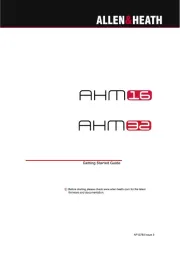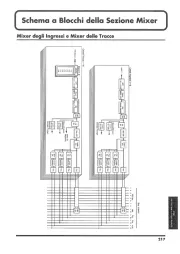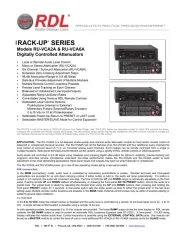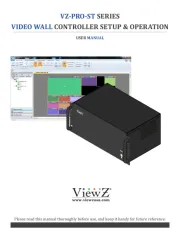Intel SL22U Handleiding
Bekijk gratis de handleiding van Intel SL22U (35 pagina’s), behorend tot de categorie Processor. Deze gids werd als nuttig beoordeeld door 110 mensen en kreeg gemiddeld 3.8 sterren uit 55.5 reviews. Heb je een vraag over Intel SL22U of wil je andere gebruikers van dit product iets vragen? Stel een vraag
Pagina 1/35

i
Intel® 64 Architecture x2APIC
Specification
Re
Re
Re
ReReference Number: 318148-004
ference Number: 318148-004
ference Number: 318148-004
ference Number: 318148-004ference Number: 318148-004
March 2010
March 2010
March 2010
March 2010March 2010

ii
INFORMATION IN THIS DOCUMENT IS PROVIDED IN CONNECTION WITH INTEL PRODUCTS. NO LICENSE,
EXPRESS OR IMPLIED, BY ESTOPPEL OR OTHERWISE, TO ANY INTELLECTUAL PROPERTY RIGHTS IS GRANT-
ED BY THIS DOCUMENT. EXCEPT AS PROVIDED IN INTEL’S TERMS AND CONDITIONS OF SALE FOR SUCH
PRODUCTS, INTEL ASSUMES NO LIABILITY WHATSOEVER, AND INTEL DISCLAIMS ANY EXPRESS OR IMPLIED
WARRANTY, RELATING TO SALE AND/OR USE OF INTEL PRODUCTS INCLUDING LIABILITY OR WARRANTIES
RELATING TO FITNESS FOR A PARTICULAR PURPOSE, MERCHANTABILITY, OR INFRINGEMENT OF ANY
PATENT, COPYRIGHT OR OTHER INTELLECTUAL PROPERTY RIGHT. INTEL PRODUCTS ARE NOT INTENDED
FOR USE IN MEDICAL, LIFE SAVING, OR LIFE SUSTAINING APPLICATIONS.
Intel may make changes to specifications and product descriptions at any time, without notice.
Developers must not rely on the absence or characteristics of any features or instructions marked “re-
served” or “undefined.” Improper use of reserved or undefined features or instructions may cause unpre-
dictable behavior or failure in developer's software code when running on an Intel processor. Intel reserves
these features or instructions for future definition and shall have no responsibility whatsoever for conflicts
or incompatibilities arising from their unauthorized use.
The Intel® 64 architecture processors may contain design defects or errors known as errata. Current char-
acterized errata are available on request.
Hyper-Threading Technology requires a computer system with an Intel ® processor supporting Hyper-
Threading Technology and an HT Technology enabled chipset, BIOS and operating system. Performance will
vary depending on the specific hardware and software you use. For more information, see http://www.in-
tel.com/technology/hyperthread/index.htm; including details on which processors support HT Technology.
Intel® Virtualization Technology requires a computer system with an enabled Intel ® processor, BIOS, virtual
machine monitor (VMM) and for some uses, certain platform software enabled for it. Functionality, perfor-
mance or other benefits will vary depending on hardware and software configurations. Intel ® Virtualization
Technology-enabled BIOS and VMM applications are currently in development.
64-bit computing on Intel architecture requires a computer system with a processor, chipset, BIOS, oper-
ating system, device drivers and applications enabled for Intel ® 64 architecture. Processors will not operate
(including 32-bit operation) without an Intel ® 64 architecture-enabled BIOS. Performance will vary de-
pending on your hardware and software configurations. Consult with your system vendor for more infor-
mation.
Intel, Pentium, Intel Xeon, Intel NetBurst, Intel Core Solo, Intel Core Duo, Intel Core 2 Duo, Intel Core 2
Extreme, Intel Pentium D, Itanium, Intel SpeedStep, MMX, and VTune are trademarks or registered trade-
marks of Intel Corporation or its subsidiaries in the United States and other countries.
*Other names and brands may be claimed as the property of others.
Contact your local Intel sales office or your distributor to obtain the latest specifications and before placing
your product order.
Copies of documents which have an ordering number and are referenced in this document, or other Intel
literature, may be obtained from:
Intel Corporation
P.O. Box 5937
Denver, CO 80217-9808
or call 1-800-548-4725
or visit Intel’s website at http://www.intel.com
Copyright © 2006-2010 Intel Corporation

1-1
INTRODUCTION
CHAPTER 1
INTRODUCTION
1.1 INTRODUCTION
The xAPIC architecture provided a key mechanism for interrupt delivery in many
generations of Intel processors and platforms across different market segments. This
document describes the x2APIC architecture which is extended from the xAPIC archi-
tecture (the latter was first implemented on Intel® Pentium® 4 Processors, and
extended the APIC architecture implemented on Pentium and P6 processors). Exten-
sions to the xAPIC architecture are intended primarily to increase processor addres-
sability. The x2APIC architecture provides backward compatibility to the xAPIC
architecture and forward extendability for future Intel platform innovations. Specifi-
cally, x2APIC
•Retains all key elements of compatibility to the xAPIC architecture:
— delivery modes,
— interrupt and processor priorities,
— interrupt sources,
— interrupt destination types;
•Provides extensions to scale processor addressability for both the logical and
physical destination modes;
•Adds new features to enhance performance of interrupt delivery;
•Reduces complexity of logical destination mode interrupt delivery on link based
architectures.
1.2 IMPACTED PLATFORM COMPONENTS
x2APIC is architected to extend from the xAPIC architecture while minimizing the
impact on platform components. Specifically, support for the x2APIC architecture can
be implemented in the local APIC unit. All existing PCI/MSI capable devices and
IOxAPIC unit should work with the x2APIC extensions defined in this document. The
x2APIC architecture also provides flexibility to cope with the underlying fabrics that
connect the PCI devices, IOxAPICs and Local APIC units.
The extensions provided in this specification translate into modifications to:
•the local APIC unit,
•the underlying fabrics connecting Message Signaled Interrupts (MSI) capable PCI
devices to local xAPICs,
•the underlying fabrics connecting the IOxAPICs to the local APIC units.
Product specificaties
| Merk: | Intel |
| Categorie: | Processor |
| Model: | SL22U |
| Processorfamilie: | Intel® Pentium® 4 |
| Processor socket: | Socket 754 |
| Processor operating modes: | 32-bit |
| Processor cache: | 0.256 MB |
| Thermal Design Power (TDP): | 31.7 W |
| Processor cache type: | L2 |
| Processorfabrikant: | Intel |
| Basisfrequentie processor: | - GHz |
| VID Voltage Range: | 3 - 3 V |
| Box: | Nee |
| L2-cache snelheid: | 180 GHz |
Heb je hulp nodig?
Als je hulp nodig hebt met Intel SL22U stel dan hieronder een vraag en andere gebruikers zullen je antwoorden
Handleiding Processor Intel

30 November 2024

16 November 2024

16 November 2024

16 November 2024

16 November 2024

16 November 2024

16 November 2024

16 November 2024

16 November 2024

16 November 2024
Handleiding Processor
- Empirical Labs
- Smart-AVI
- Warm Audio
- Hikvision
- RGBlink
- ART
- Alto
- DBX
- Rupert Neve Designs
- Sonifex
- ViewZ
- Black And Decker
- Heritage Audio
- Blackmagic Design
- Allen & Heath
Nieuwste handleidingen voor Processor

9 Juli 2025

16 Mei 2025

2 April 2025

2 April 2025

26 Maart 2025

18 Maart 2025

17 Maart 2025

17 Maart 2025

17 Maart 2025

17 Maart 2025